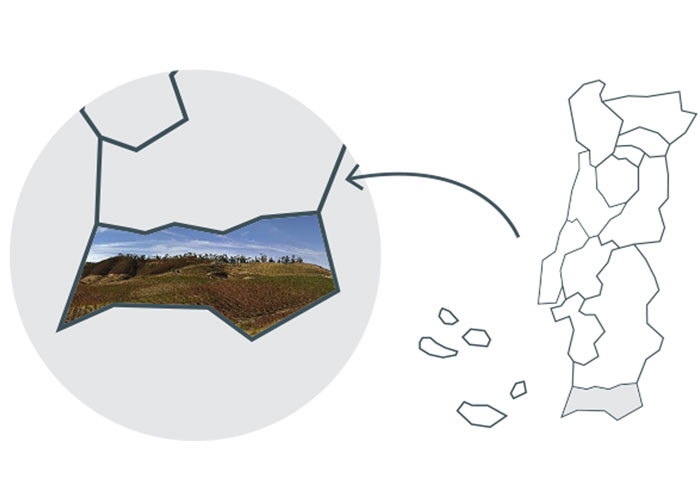Wine regions
Portuguese wine regions
Algarve
A bit of history
Algarve’s prefix ‘Al’, like much below Tejo, is due to five centuries of moorish occupation. The same goes for Alentejo, Aljezur, Aljustrel, etc…The prefix suited geography just right, but one can’t say the same about its application to food and drinks, given the occupant’s bad feelings about Alcohol.
Fortunately for us wine lovers, after many battles Algarve was claimed back by Portuguese, wine loving, people.
What to expect?
Vines love Portugal’s southernmost region for the same reason the tourists do – it’s never too hot, never too cold, and they can be sure to enjoy more than 3,000 hours of sunshine every year.
The ‘border’ with the Alentejo region to the north is a mere 20 or 30 miles from the Algarve coast, yet the Algarve suffers none of the Alentejo’s extremes of temperature. Why? A beautiful chain of mountains running all the way between the Spanish border and the Atlantic coast separates the two regions and blocks the hot, dry winds from the north, leaving the Algarve under the moderating influence of the sea – the Mediterranean to the south, the Atlantic Ocean to the west.
East of Faro out towards Spain the climate is warmly Mediterranean, whilst west of Faro the Atlantic makes itself felt in a more temperate climate, fresher and more humid.
The soils in the Algarve are very varied: sandy, clay, limestone, sandstone, sometimes very shallow over rock, with some rare areas of schist on the mountainous slopes in the nort
Traditional red varieties include Castelão and Negra Mole. Whites’ would be Arinto and Síria. Syrah has been used extensively, more recently, as it shows perfect adaptation to Algarve’s weather and terroir.
Both reds and whites bring aromas of mature fruit and a smooth, warm flavour – which is reinforced by their usually high alcohol grade.
Reds
Common varieties: Castelão and Negra Mole.
Whites
Common varieties: Arinto, Malvasia Fina, Manteúdo and Síria.
Adapted from: CVR Algarve, Wines of Portugal, Instituto do Vinho e da Vinha.

out of
stock
approx. £10.76
White WineCabritaMoscatel 2022, 75clRegional Algarve
White: Aromatic
11.5%

